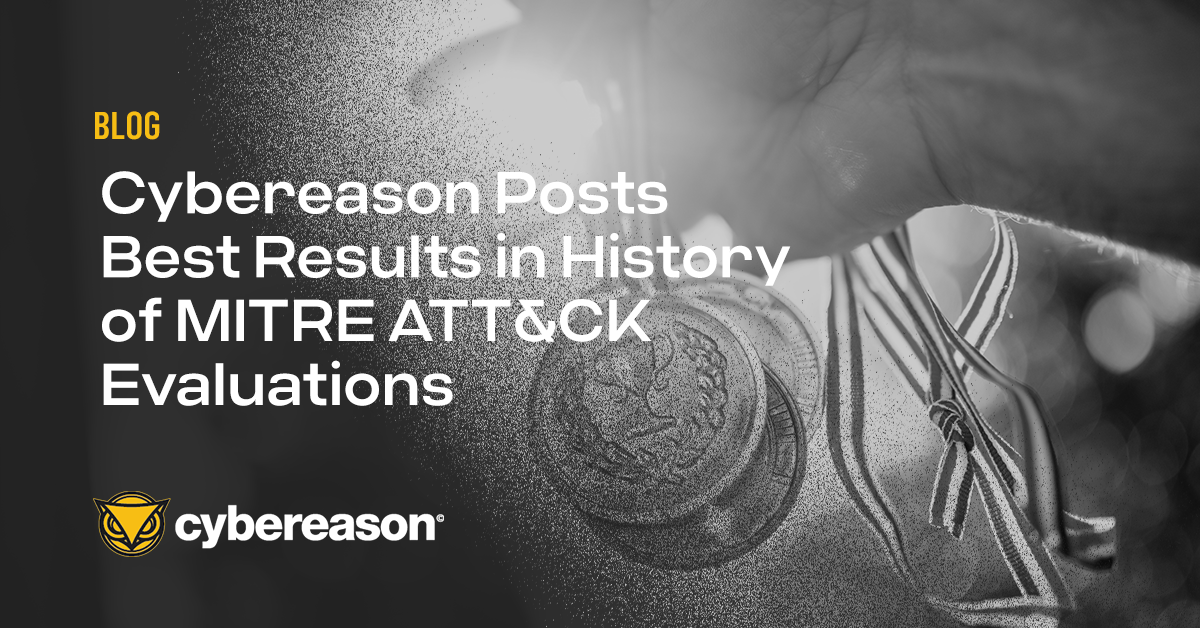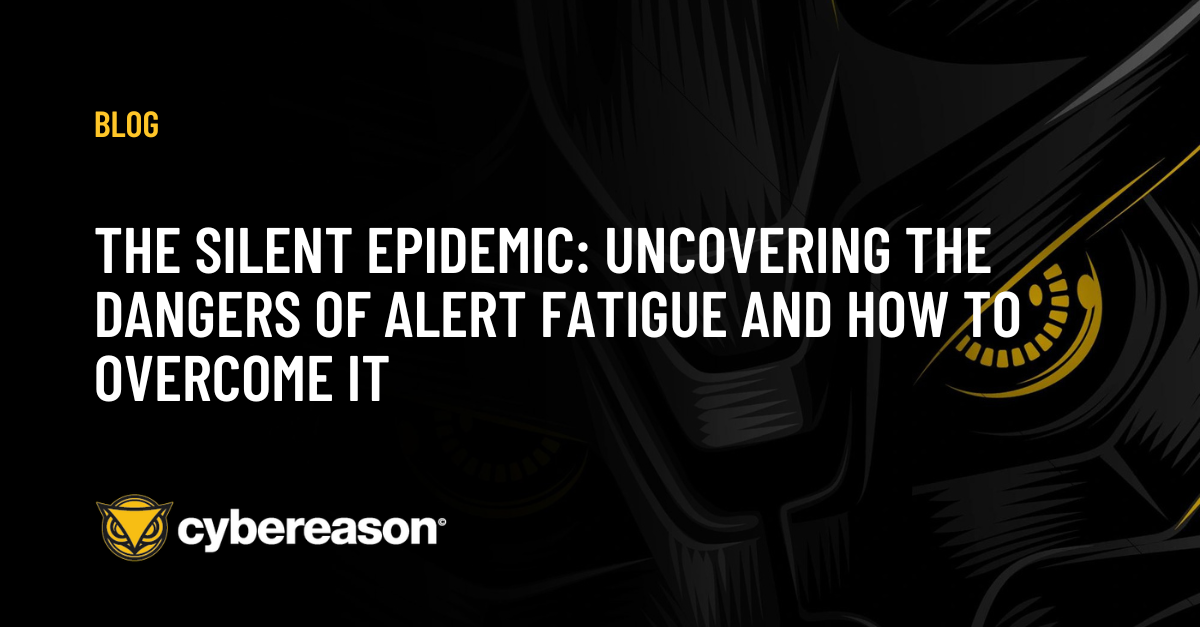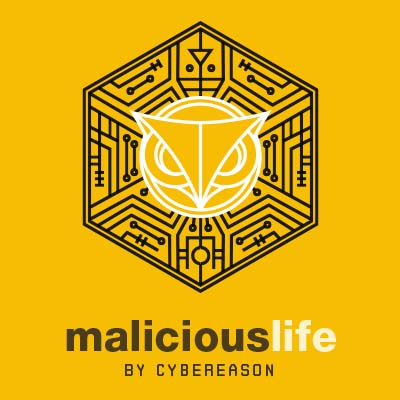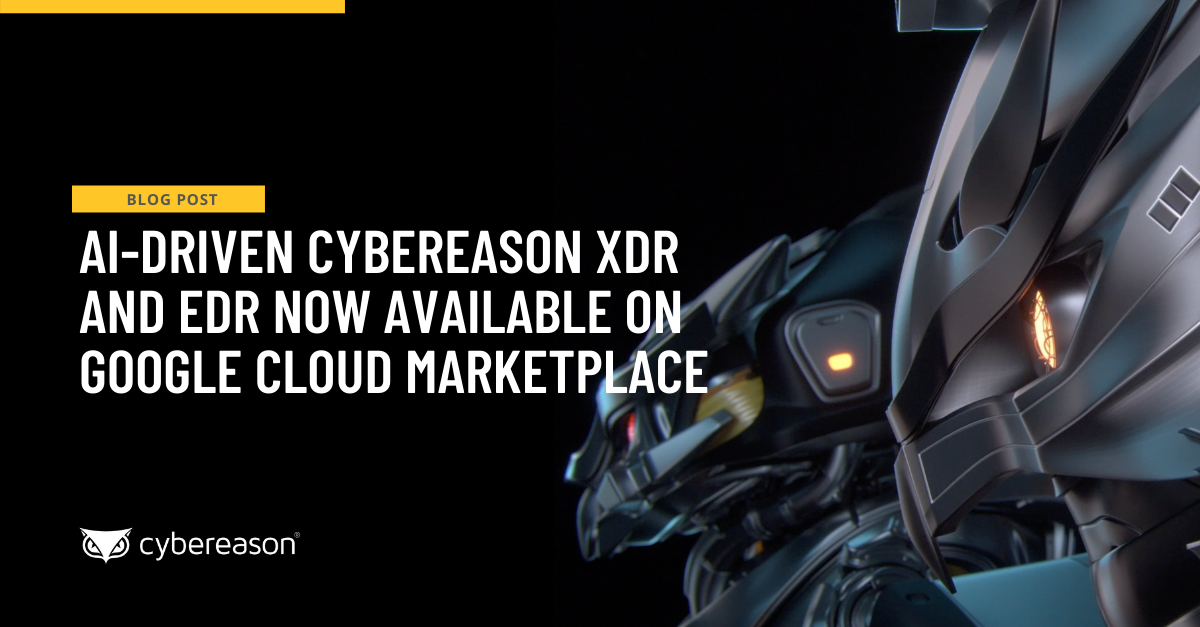
Cybereason Posts Best Results in History of MITRE ATT&CK Evaluations
Cybereason leads the industry in the MITRE ATT&CK Enterprise Evaluation 2022, achieving the best results ever in the history of these evaluations...

Cybereason Team
In today's digital age, cyberattacks have become a common and constant threat to individuals and organizations alike. From phishing scams to malware attacks, cybercriminals are constantly finding new ways to exploit vulnerabilities and steal sensitive information. Ransomware is increasingly prevalent, with high-profile attacks targeting large organizations, government agencies, and healthcare systems. The consequences of a ransomware attack can be devastating, resulting in financial loss, reputational damage, and even the compromise of sensitive data.
But there is another danger associated with security breaches – alert fatigue. As companies increase their security measures to prevent breaches, their security teams are inundated with a never-ending flow of alerts and notifications. Unfortunately, this constant influx of alerts can actually jeopardize an organization's security. The sheer volume of notifications has become so overwhelming that it is difficult to discern which ones are crucial, and there may not be enough resources or technology in place to effectively handle them all. As a result, critical warnings and indicators of potential cyber-attacks can easily go unnoticed or ignored, leaving organizations vulnerable.
In this blog post, we will take a deep dive into the risks of alert fatigue in the context of cyber attacks and security breaches and introduce how the Cybereason Defense Platform can help mitigate these risks.
Alert fatigue is a pressing concern that greatly affects security teams, causing them to become overwhelmed to potential threats as a result of a constant influx of alerts and notifications. According to our latest survey, 16% of SOC professionals admitted to only handling 50-59% of their alert pipeline each week. This can have dangerous consequences, particularly in the face of cyber attacks, as critical warnings and indicators may be overlooked or disregarded resulting in delayed responses to attacks, increasing the likelihood and impact of a successful ransomware incident.
Moreover, alert fatigue is not just a nuisance for Security Operations Center (SOC) teams, it poses a significant threat to enterprise security. With analysts bombarded by thousands of alerts daily, each requiring thorough investigation and correlation, it becomes easy to get caught up in false positives and miss crucial signs of a data breach. In fact, on average, SOC teams receive a staggering 500 investigation-worthy endpoint security alerts per week, with investigations consuming a whopping 65% of their time. To make matters worse, many security teams are understaffed and lack the necessary resources, leading to manual processes that only add to the frustration and burden.
The consequences of alert fatigue are not limited to the well-being of SOC team members, as it ultimately impacts the overall security of the organization. The constant stress and burnout caused by this issue can lead to high staff turnover, but more importantly, it can result in compromised security outcomes. It is crucial for organizations to address this issue and provide their security teams with the necessary support and resources to effectively combat alert fatigue and protect against attacks.
To effectively combat alert fatigue, organizations must proactively address cybersecurity. This involves implementing robust security measures, such as firewalls, intrusion detection systems, and regular data backups. By continuously monitoring and adapting security measures, organizations can distinguish real threats from false alarms. Investing in security automation and artificial intelligence tools can help filter and prioritize alerts, easing the workload on security teams.
Cybereason Defense Platform, is a comprehensive solution offering robust protection against cyber threats. Powered by AI, this platform defends all endpoints and intercepts every malicious operation with one agent, one console, and one team. Cybereason's SDR Platform is a significant evolution in our approach to cyber-protection. It converges endpoint protection, detection and response, SIEM, Observability, and other cybersecurity tools into a unified service portal, security data lake, and AI-powered platform. This provides near real-time, autonomous security across an organization's entire digital footprint and network.
Our cutting-edge CyberReason SIEM Detection and Response (SDR) utilizes advanced AI and machine learning to correlate and prioritize alerts. By analyzing data from multiple sources, it identifies and highlights critical alerts, reducing the number of notifications for analysts to review. Saving time, resource burnout and helping combat alert fatigue.
Cybereason's operation-centric approach streamlines the entire attack narrative from start to finish, conveniently displayed on one screen. This includes a comprehensive overview of all affected users and devices. Thanks to Cybereason's unparalleled grasp of data relationships, each detection is accompanied by complete context through the MalOp™. This involves correlating alerts, pinpointing the source of the attack, presenting a detailed attack timeline, and automating as much of this process as possible to increase analyst productivity.
In the fight against alert fatigue and cyber-attacks, awareness and education are key factors. It is crucial for both individuals and organizations to fully comprehend the dangers of alert fatigue and its potential impact. By educating ourselves and our employees on how to effectively manage and prioritize alerts, we can significantly reduce the risk of falling victim. Keeping up-to-date on the latest cyber threats and regularly training employees on how to identify and respond to potential attacks are also essential steps in maintaining strong cybersecurity. Implementing regular training and awareness programs for employees can greatly contribute to preventing ransomware attacks by equipping them with the knowledge to detect and report suspicious activity. Moreover, having a well-defined incident response plan in place is crucial in effectively handling any cyber-attacks and minimizing their consequences.
Ironically, while technology is often the root cause of alert fatigue, it can also be the solution to combat it. Thanks to advancements in artificial intelligence and machine learning, systems can now learn our preferences and patterns, filtering out unnecessary alerts and allowing us to focus on the critical ones. Additionally, technology can automate tasks and processes, freeing up time for individuals to prioritize important alerts.
As a security professional, you understand the importance of staying ahead of cyber threats. However, with the increasing sophistication and frequency of attacks, it can be overwhelming for security teams to keep up. This is where Cybereason MalOp™ comes in.
The Cybereason MalOp™, short for Malicious Operation Detection, is our latest innovation in operation-centric cybersecurity. Our platform utilizes AI-Powered analytics to automate the triage and investigation process across all impacted devices, providing a comprehensive, end-to-end view of an attack.
We recognize that alert fatigue is a common challenge for security teams, with large enterprises facing tens of thousands of alerts per day. These alerts are often reported individually and lack a larger connection to related malicious activities, making it difficult for analysts to piece together the full story of an attack. This scattered and chaotic approach can result in missed threats and delayed response times.
The MalOp™ offers an alternative to traditional alerts by providing a contextualized view of the entire narrative of an attack, correlated across all impacted endpoints, in a single screen. This means that security analysts can shift from a reactive, alert-centric approach to a proactive, operation-centric approach. This not only saves time and resources but also enables a more effective response to threats.
With the MalOp™, you can say goodbye to alert overload and hello to a streamlined and efficient security approach. Our platform empowers your team to stay ahead of threats and safeguard your organization from malicious operations.
In conclusion, the hidden dangers of ransomware attacks and other security breaches continue to pose a significant threat to organizations both financially and through reputational damage, and the risks associated with alert fatigue cannot be ignored. By understanding the impact of ransomware, the rise of attacks, and the dangers of alert fatigue, organizations can take proactive measures to overcome this silent epidemic. This includes implementing strong security measures, prioritizing and filtering alerts, taking breaks from technology, utilizing technology to our advantage by investing in automation tools, and having a comprehensive incident response plan in place. It is crucial for organizations to stay vigilant and proactive in their approach to cybersecurity to protect against cyber attacks whilst addressing alert fatigue.
Embrace technology, let it assist you in combating alert fatigue and stay one step ahead of cyber attackers. Don't just take our word for it, see how Cybereason technology can work for you. Schedule a demo with our team and experience the power of an operation-centric approach to cybersecurity.

Cybereason is dedicated to partnering with Defenders to end attacks at the endpoint, in the cloud and across the entire enterprise ecosystem. Only the AI-driven Cybereason XDR Platform provides predictive prevention, detection and response that is undefeated against modern ransomware and advanced attack techniques. The Cybereason MalOp™ instantly delivers context-rich attack intelligence across every affected device, user and system with unparalleled speed and accuracy. Cybereason turns threat data into actionable decisions at the speed of business.
All Posts by Cybereason Team
Cybereason leads the industry in the MITRE ATT&CK Enterprise Evaluation 2022, achieving the best results ever in the history of these evaluations...

Google Cloud customers can now protect their organizations from sophisticated cyberattacks with the availability of the Cybereason XDR and EDR solutions on the Google Cloud Marketplace...

Cybereason leads the industry in the MITRE ATT&CK Enterprise Evaluation 2022, achieving the best results ever in the history of these evaluations...

Google Cloud customers can now protect their organizations from sophisticated cyberattacks with the availability of the Cybereason XDR and EDR solutions on the Google Cloud Marketplace...
Get the latest research, expert insights, and security industry news.
Subscribe